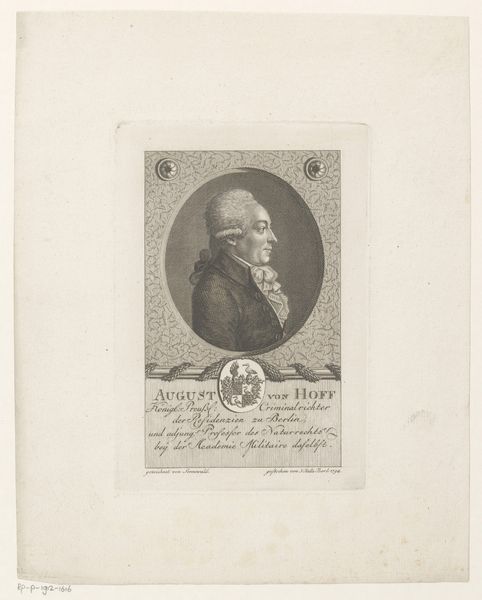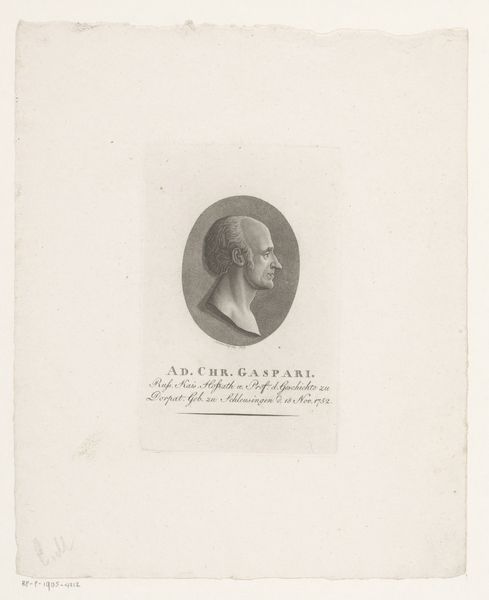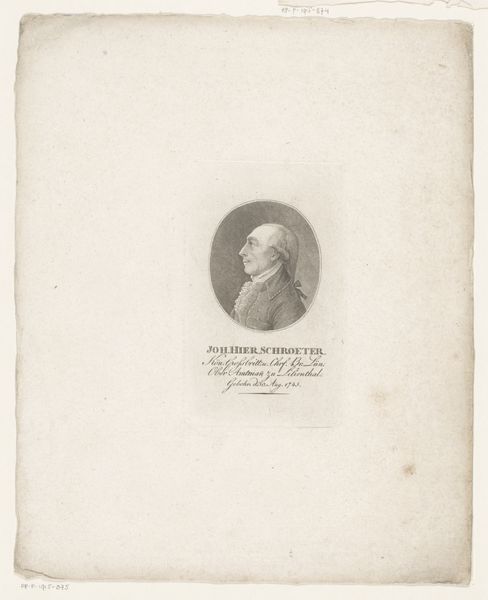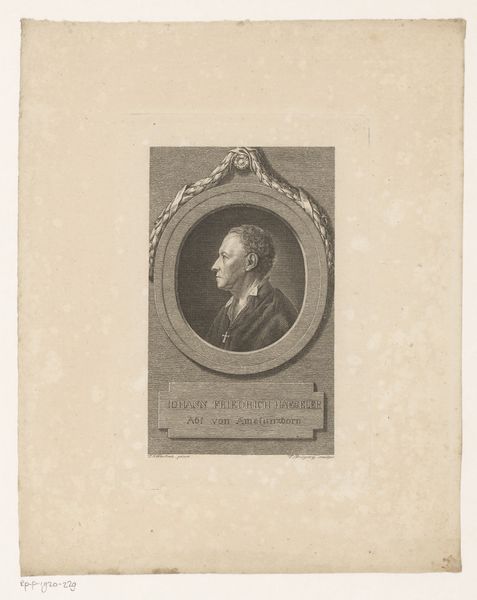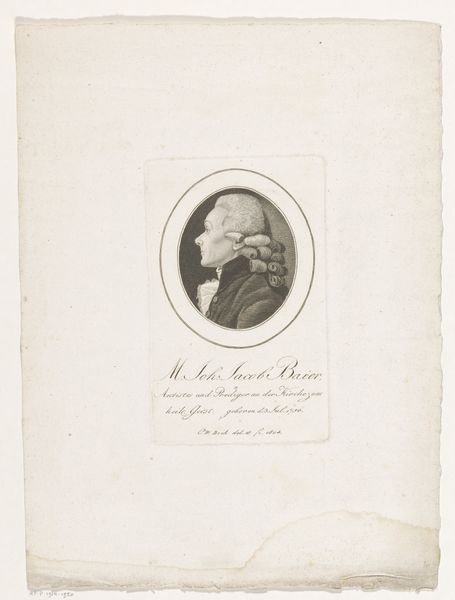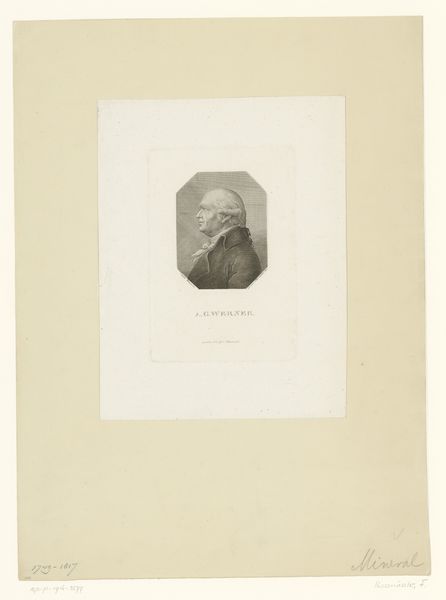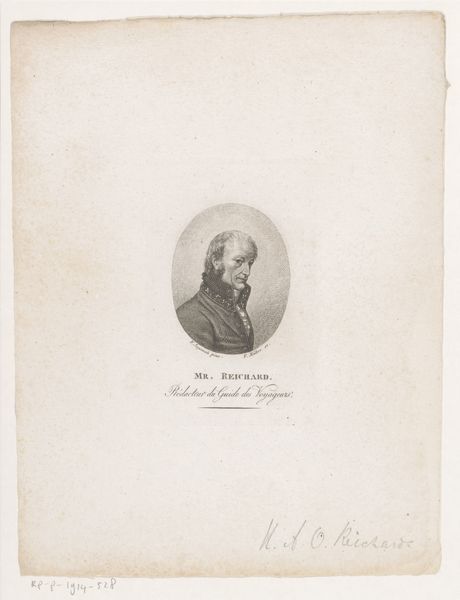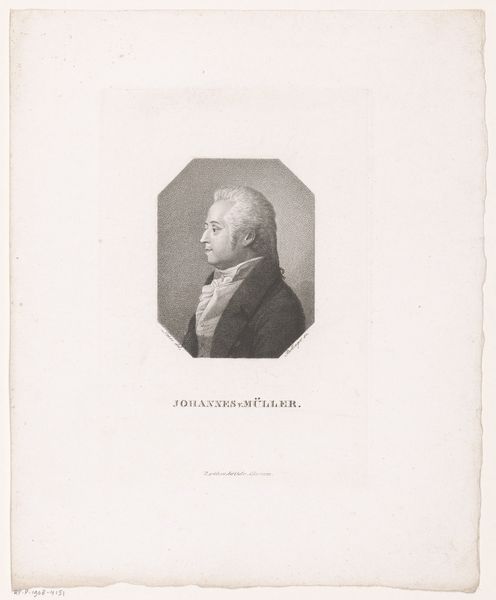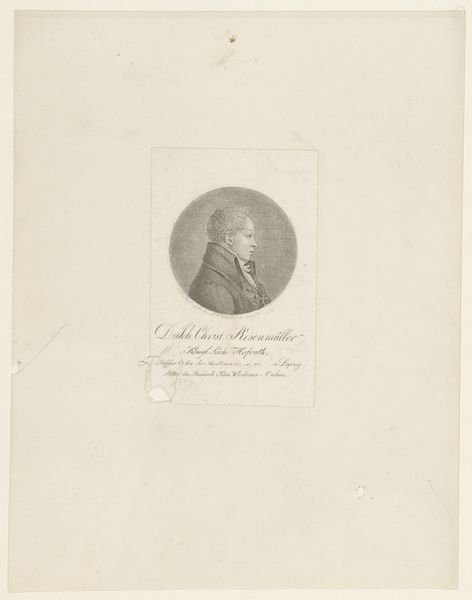
print, paper, engraving
#
portrait
#
neoclacissism
#
ink paper printed
# print
#
light coloured
#
paper
#
engraving
Dimensions: height 177 mm, width 103 mm
Copyright: Rijks Museum: Open Domain
Editor: So, here we have "Portret van Jean Baptiste Joseph Delambre," a print from between 1775 and 1834, currently residing in the Rijksmuseum. The monochromatic nature of the engraving gives it a stoic, almost academic feel, doesn’t it? What do you see in this piece beyond a formal portrait? Curator: The circular frame immediately calls to mind a Roman coin or cameo. It's interesting to note how Delambre is being presented within a visual language associated with antiquity. The profile view, meticulously rendered, is meant to invoke a sense of timelessness. Can you see how his identity is being constructed through deliberate visual cues? Editor: Definitely. It's more than just a likeness; it’s about placing him within a certain intellectual lineage. I also notice the inscription beneath the portrait; could that shed some light? Curator: Indeed. The inscription identifies him as a member of the National Institute, a significant intellectual body in revolutionary France. Delambre was an astronomer, and measuring the meridian arc was critical for defining the metric system. The image connects him with that ambition. Isn't it striking how a portrait can act as a visual declaration of one's role in shaping knowledge? Editor: It's like he's being enshrined as one of the scientific heroes of the age. I’m now seeing this as not just a portrait but also an assertion of enlightenment ideals and the importance of empirical observation. Curator: Precisely! Images have long been used to anchor identities to larger cultural narratives. This engraving aimed to place Delambre, and by extension, his scientific work, within a specific context of enlightenment progress. Editor: It makes you wonder about all the hidden cultural layers beneath what initially appears to be just a straightforward portrait. Curator: Absolutely! The encoding of visual language within art encourages us to ask deeper questions.
Comments
No comments
Be the first to comment and join the conversation on the ultimate creative platform.

